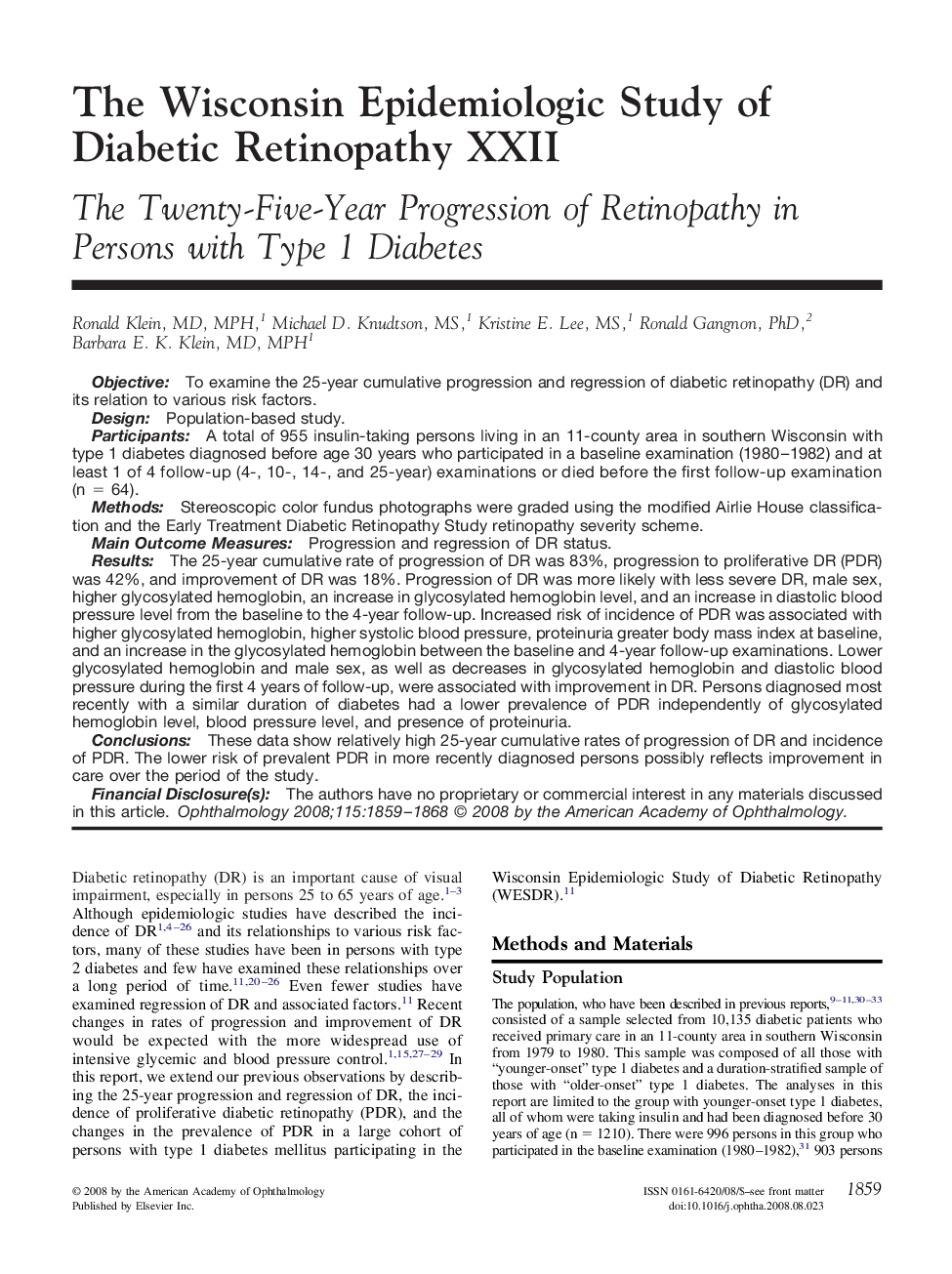| Article ID | Journal | Published Year | Pages | File Type |
|---|---|---|---|---|
| 4029584 | Ophthalmology | 2008 | 10 Pages |
ObjectiveTo examine the 25-year cumulative progression and regression of diabetic retinopathy (DR) and its relation to various risk factors.DesignPopulation-based study.ParticipantsA total of 955 insulin-taking persons living in an 11-county area in southern Wisconsin with type 1 diabetes diagnosed before age 30 years who participated in a baseline examination (1980–1982) and at least 1 of 4 follow-up (4-, 10-, 14-, and 25-year) examinations or died before the first follow-up examination (n = 64).MethodsStereoscopic color fundus photographs were graded using the modified Airlie House classification and the Early Treatment Diabetic Retinopathy Study retinopathy severity scheme.Main Outcome MeasuresProgression and regression of DR status.ResultsThe 25-year cumulative rate of progression of DR was 83%, progression to proliferative DR (PDR) was 42%, and improvement of DR was 18%. Progression of DR was more likely with less severe DR, male sex, higher glycosylated hemoglobin, an increase in glycosylated hemoglobin level, and an increase in diastolic blood pressure level from the baseline to the 4-year follow-up. Increased risk of incidence of PDR was associated with higher glycosylated hemoglobin, higher systolic blood pressure, proteinuria greater body mass index at baseline, and an increase in the glycosylated hemoglobin between the baseline and 4-year follow-up examinations. Lower glycosylated hemoglobin and male sex, as well as decreases in glycosylated hemoglobin and diastolic blood pressure during the first 4 years of follow-up, were associated with improvement in DR. Persons diagnosed most recently with a similar duration of diabetes had a lower prevalence of PDR independently of glycosylated hemoglobin level, blood pressure level, and presence of proteinuria.ConclusionsThese data show relatively high 25-year cumulative rates of progression of DR and incidence of PDR. The lower risk of prevalent PDR in more recently diagnosed persons possibly reflects improvement in care over the period of the study.Financial Disclosure(s)The authors have no proprietary or commercial interest in any materials discussed in this article.
